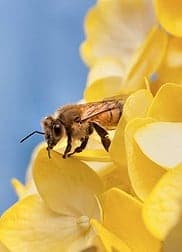U.S. Department of Agriculture (USDA) scientists in Maryland and their colleagues have found that two pathogens causing mysterious honey bee ailments are a problem not just in the spring, but they might pose a threat year-round. Ryan Schwarz and Jay Evans, entomologists with the Agricultural Research Service (ARS), have shown that two species of bacteria, Spiroplasma melliferum and S. apis, are more common than previously thought and infect honey bees in places as diverse as Brazil and Beltsville, Maryland.
ARS is USDA’s principal intramural scientific research agency, and this research supports the USDA priority of promoting sustainable agriculture.
Both pathogens were discovered more than 30 years ago, but scientists are still unsure if they are factors in colony collapse disorder or major causes of other bee mortalities.
Schwarz and Evans, based at the ARS Bee Research Laboratory in Beltsville, and their colleagues at the Brazilian Honey Bee Laboratory in São Paulo analyzed the DNA of bees in Beltsville and Brazil between 2011 and 2013. Bees were collected from 11 states in Brazil and 2 areas in Beltsville. Schwarz had recently developed genetic markers that allow researchers to distinguish S. apis from other bacteria in bees. They used those markers and another recently developed set of S. melliferum markers to determine the year-round prevalence of the two pathogens.
As expected, the researchers found that both pathogens were prevalent in the spring. But they also found that they were common at other times of the year as well and that their prevalence rates varied depending on the location. In Beltsville, the pathogens were more prevalent in the spring, while in Brazil they were more prevalent in the fall. The results also showed that S. melliferum was the more prevalent of the two and that the presence of one pathogen made bees more susceptible to the other.
Schwarz says the results should help beekeepers and scientists monitor the health of honey bees by raising awareness about the year-round nature of the threat the pathogens might pose. Equipped with the new genetic markers developed for the pathogens, scientists also will be better able to screen bee colonies for the pathogens. Read more about this research in the February 2015 issue of Agricultural Research magazine.


